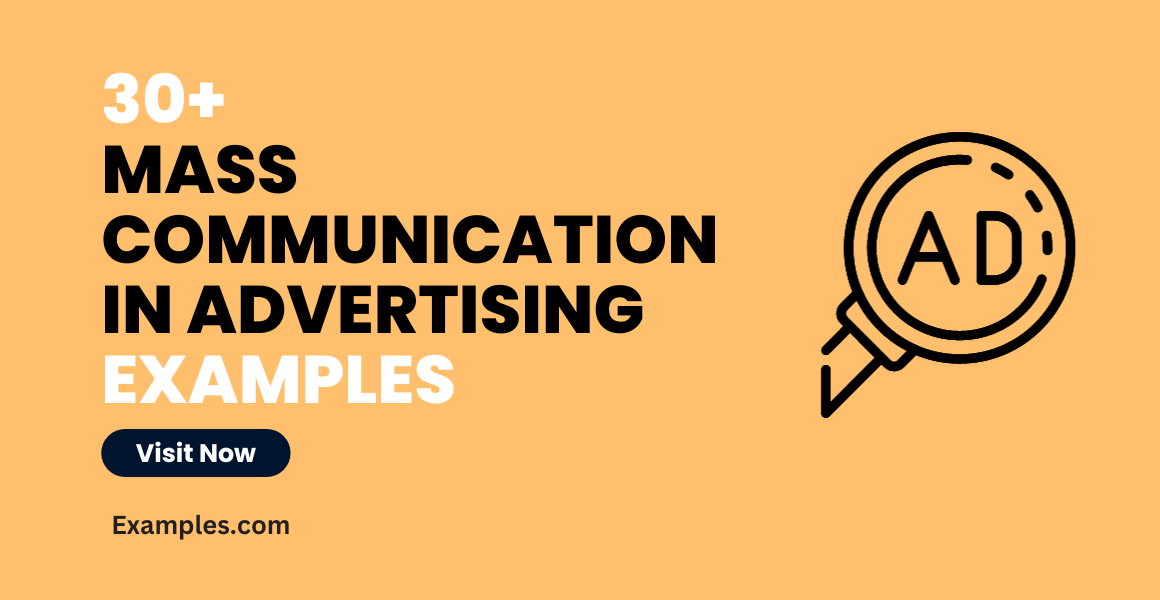29+ Mass Communication in Advertising Examples
Discover the fascinating realm of Mass Communication in Advertising with our comprehensive guide. This resource is packed with insightful mass communication examples and detailed sentence illustrations, offering a deep dive into the world where advertising and mass communication converge. Ideal for students, professionals, and enthusiasts, this guide illuminates the core principles, modern strategies, and future prospects of advertising through mass media, making it a must-read for anyone looking to excel in this dynamic field.
30 Mass Communication in Advertising
Explore the vibrant intersection of Mass Communication in Advertising with 30 unique and distinct examples, each accompanied by a brief explanation. This collection demonstrates how advertising leverages various mass communication platforms, showcasing strategies that resonate with broad audiences. From clever ad campaigns to innovative communication tactics, these examples are perfect for those seeking to understand the nuances of advertising in the mass media landscape.
- “Buy one, get one free!” – A classic promotional phrase used in retail advertising. This sentence is a straightforward and effective way to attract customers, emphasizing value and urgency in a retail context.
- “Tune in at 8 PM for the exclusive reveal!” – Used in television advertising to build anticipation. This phrase hooks viewers by promising exclusive content, fostering a sense of curiosity and excitement.
- “Join our community of innovators.” – A phrase used in online tech advertising. This encourages a sense of belonging and appeals to the desire to be part of a forward-thinking group.
- “Real stories, real relief.” – Used in healthcare advertising. It emphasizes authenticity and effectiveness, connecting with audiences on an emotional level.
- “Your journey to fitness starts here.” – Common in gym and health club ads. This phrase motivates and inspires action, targeting individuals seeking a lifestyle change.
- “Experience luxury like never before.” – Used in high-end product advertising. It evokes a sense of exclusivity and superior quality, appealing to aspirational desires.
- “Breaking news: Stay updated with us.” – A phrase in news broadcasting. This positions the broadcaster as a reliable source of timely information, essential in news media.
- “Revolutionize your cooking with our new appliance.” – Found in kitchenware advertising. This encourages consumers to imagine a transformed kitchen experience, combining innovation with everyday activities.
- “Eco-friendly solutions for a better tomorrow.” – Used in environmentally-focused advertising. It resonates with environmentally conscious consumers, emphasizing responsibility and sustainability.
- “Transform your space with our designs.” – Common in interior decor ads. This invites audiences to envisage a refreshed living space, highlighting the transformative power of the product.
- “Plan your dream vacation now!” – Used in travel agency advertising. This phrase incites action and taps into the audience’s desire for adventure and relaxation.
- “Drive the change with our electric cars.” – In electric vehicle advertising. It appeals to eco-conscious drivers, promoting the idea of being part of a larger movement.
- “Unleash your child’s potential with our educational toys.” – Seen in children’s product ads. This sentence targets parents’ desire to aid their child’s development, combining play with learning.
- “Discover the secret to flawless skin.” – Common in skincare advertising. It piques curiosity and promises a solution to a common desire – perfect skin.
- “The future of home entertainment is here.” – In home theater system ads. This positions the product as cutting-edge, appealing to tech-savvy consumers.
- “Empower your business with our software solutions.” – In B2B technology ads. It speaks to the desire to enhance business efficiency and success.
- “Your safety is our priority.” – Used in insurance advertising. This phrase builds trust by emphasizing the brand’s commitment to the customer’s wellbeing.
- “Feed your adventure with our energy bars.” – In health snack advertising. It connects the product with an active, adventurous lifestyle.
- “Crafting memories, one photo at a time.” – Used in photography service ads. This emphasizes the sentimental value and personal touch of the service.
- “Feel the thrill of live sports.” – In sports broadcasting promotions. It captures the excitement and immediacy of watching sports live.
- “Step into the future with our digital solutions.” – In digital services advertising. This phrase suggests innovation and progress, appealing to tech-oriented audiences.
- “Redefine your coffee experience.” – In coffee product ads. It invites coffee enthusiasts to elevate their daily ritual.
- “Find your voice with our music lessons.” – In music education advertising. This encourages personal growth and the pursuit of a passion.
- “Bringing the world closer to you.” – In telecommunications ads. This emphasizes connectivity and the global reach of the service.
- “Experience the difference with our customer service.” – In service industry ads. It highlights a commitment to exceptional customer care.
- “Dress for success with our fashion line.” – In clothing brand advertising. This connects fashion with personal and professional advancement.
- “Streamline your workflow with our apps.” – In productivity software ads. It appeals to the desire for efficiency and organization in work and personal life.
- “Nourish your body, nourish your soul.” – In organic food advertising. This phrase links physical health with overall wellbeing.
- “Capture the world in high definition.” – In camera technology ads. It emphasizes the quality and capabilities of the product.
- “Building a smarter future together.” – In smart home technology ads. This phrase fosters a sense of community and progress through technology.
Difference between Marketing and Advertising in Mass Communication
Marketing and advertising are two pivotal aspects of mass communication, each playing a unique role in brand communication and audience engagement. Marketing encompasses the broader strategy of promoting products or services, including market research, product development, and distribution channels. Advertising, on the other hand, is a subset of marketing, focusing specifically on the creation and dissemination of promotional messages. This distinction is crucial in crafting effective mass communication strategies.
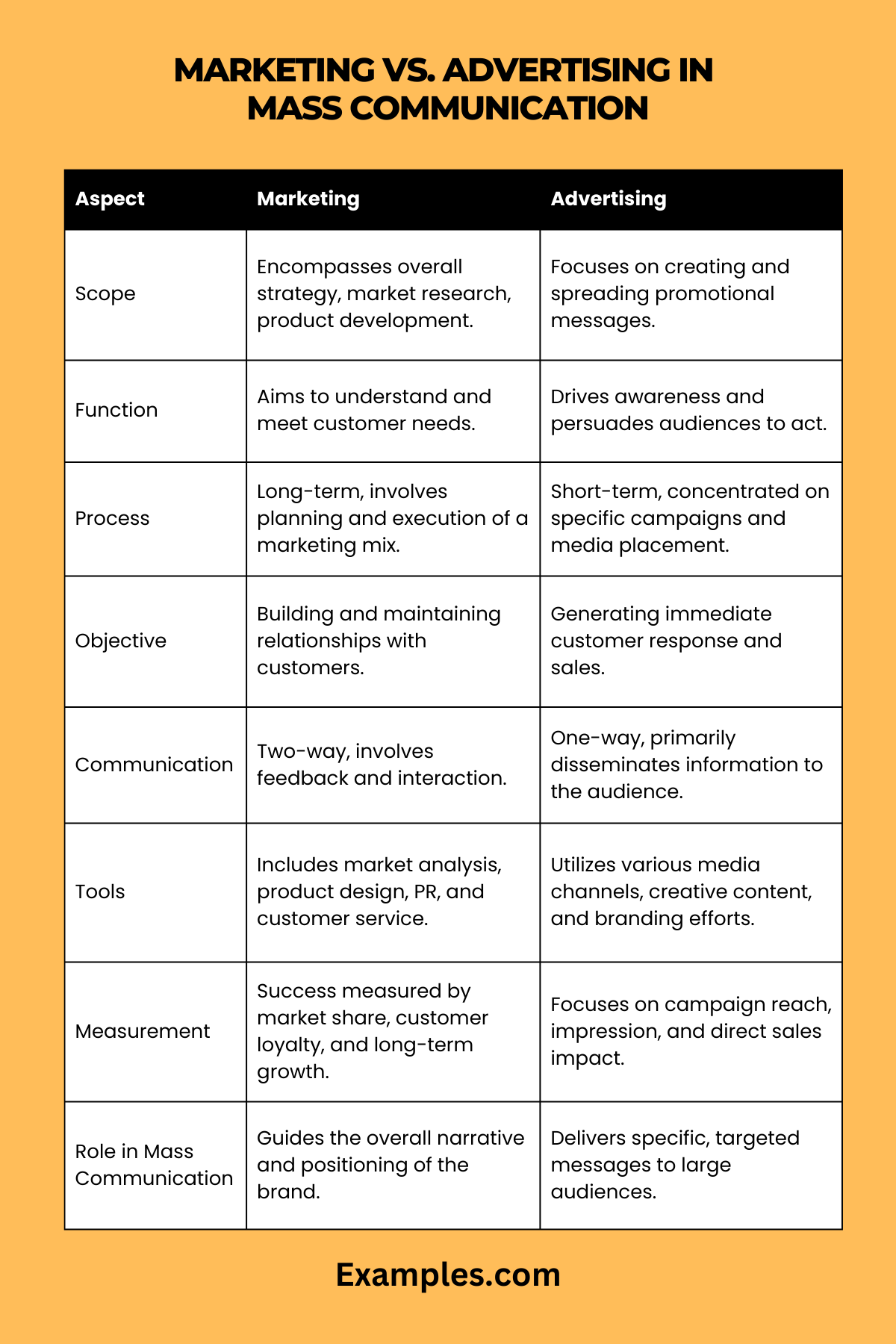
Advertising Models in Mass Communication
In the diverse landscape of mass communication, various advertising models play a critical role in shaping how brands communicate with their audiences. From traditional models like television and print ads to digital approaches like social media and influencer marketing, each model offers unique advantages. Understanding these models is key to crafting campaigns that resonate with target audiences, making advertising more effective and impactful in today’s fast-paced media environment.
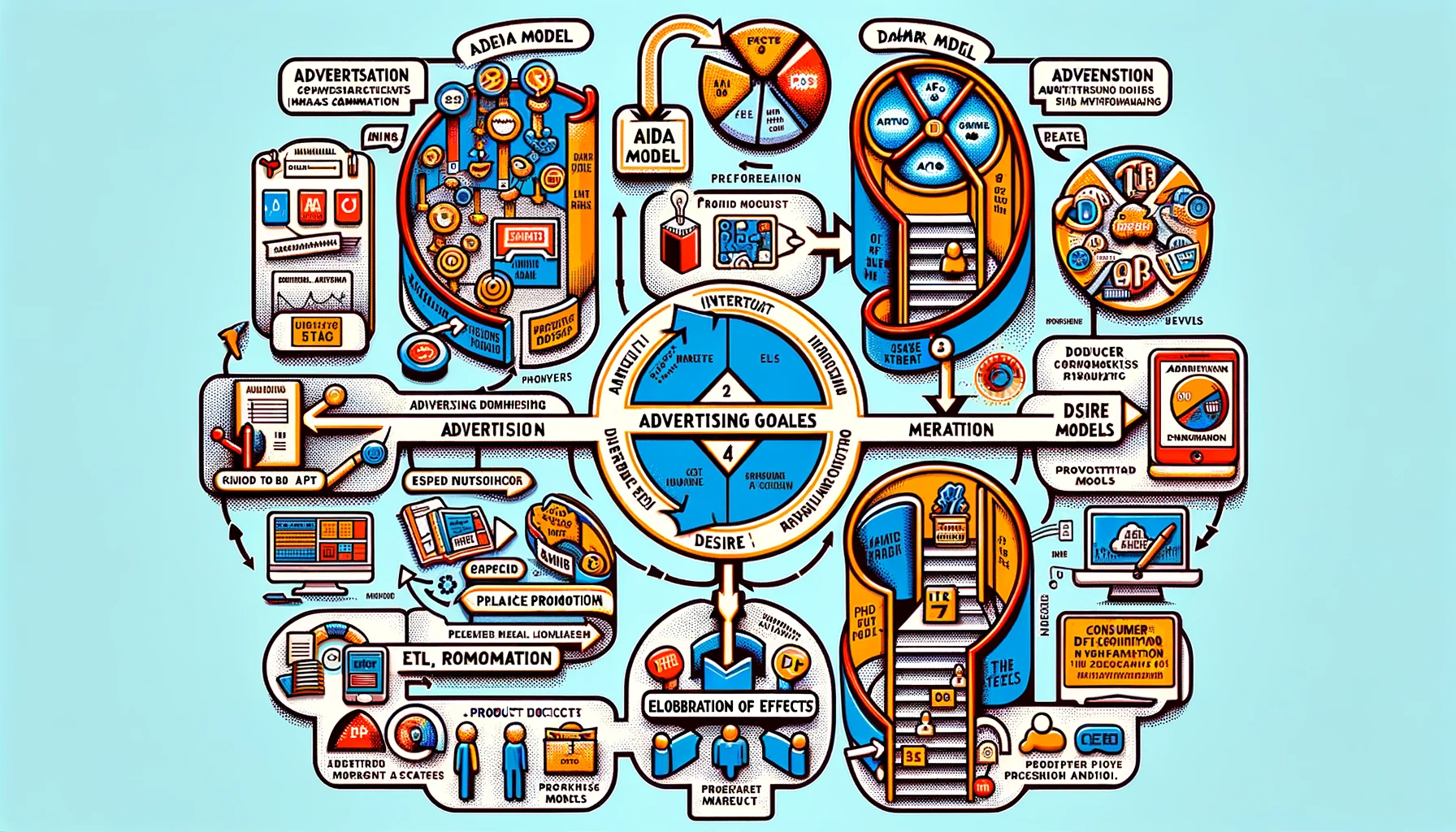
Examples of Advertising Models in Mass Communication
- “Our brand uses targeted Facebook ads to reach young adults.” This highlights the use of social media platforms for precise demographic targeting in digital advertising.
- “We’re launching a multi-channel campaign across TV, radio, and online platforms.” Demonstrates an integrated approach, utilizing various media channels for broader reach.
The Future of Advertising in the Era of Mass Communication
The future of advertising in mass communication is marked by rapid technological advancements and changing consumer behaviors. Emerging trends like augmented reality (AR) ads, AI-driven personalized marketing, and the growing importance of ethical advertising are reshaping the landscape. Staying ahead in this evolving field requires adaptability and a keen understanding of both technology and human psychology, ensuring that advertising remains effective and relevant in the digital age.
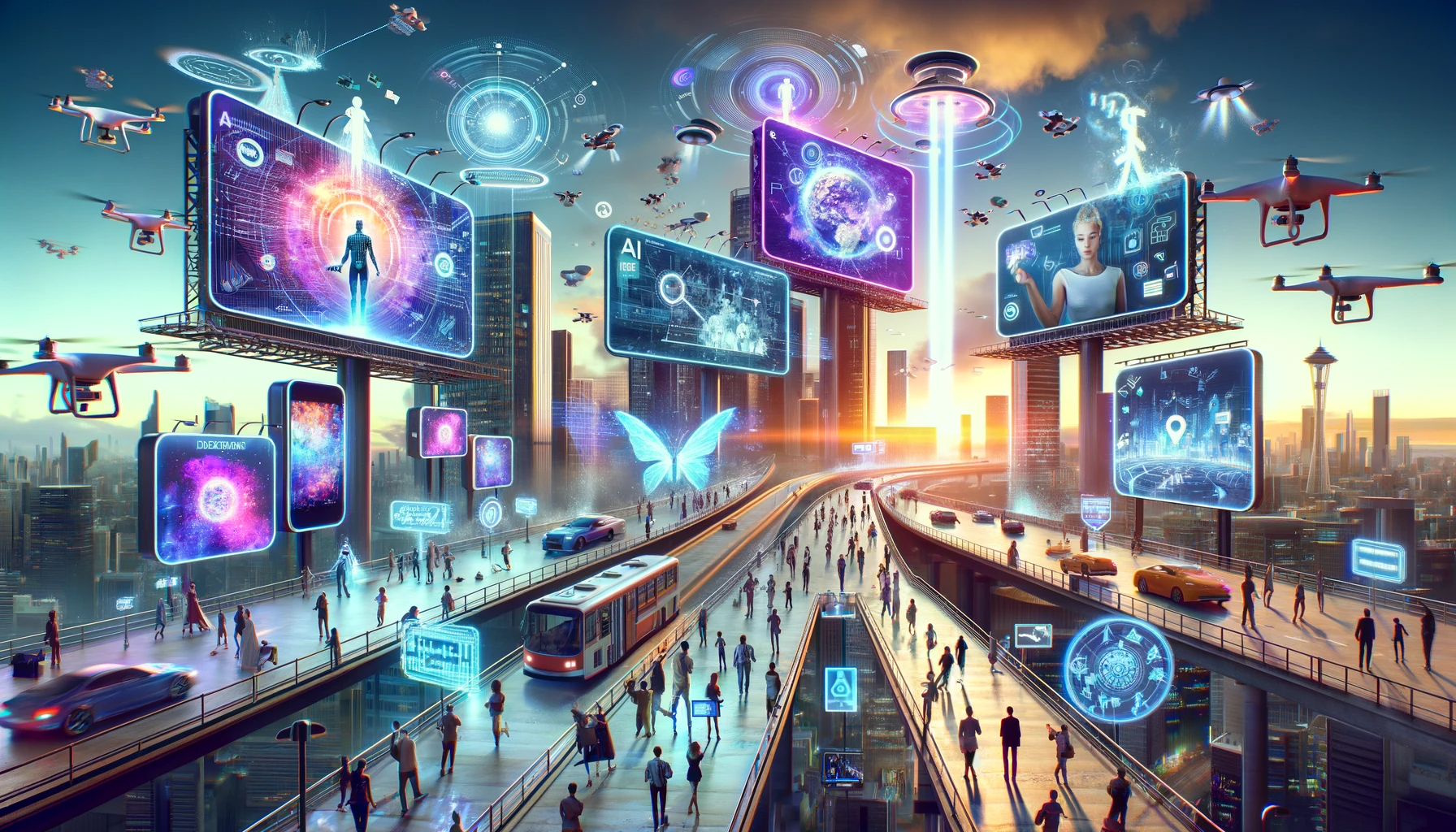
Examples of Future Advertising Trends in Mass Communication
- “Our next campaign will feature AR experiences to engage users interactively.” This example showcases the incorporation of augmented reality for immersive advertising experiences.
- “We’re exploring AI for personalized ad content based on user preferences.” Illustrates the use of artificial intelligence to tailor advertisements to individual consumer interests and behaviors.
Types of Advertising in Mass Communication
Mass Communication in Advertising is a multifaceted field with various types of advertising strategies, each catering to different audiences and objectives. Understanding these types is crucial for businesses and advertisers to effectively reach their target audience. Let’s delve into the most prominent types of advertising used in mass communication today.
1. Print Advertising
Print advertising is one of the oldest forms of advertising, encompassing newspapers, magazines, brochures, and flyers. It’s particularly effective for local businesses and for reaching an audience that prefers physical media. Print ads offer longevity and can be tailored to niche markets or broad audiences, depending on the publication.
2. Television Advertising
Television advertising combines visual and auditory elements, making it a powerful medium for storytelling and brand promotion. It reaches a diverse audience and is particularly effective for products and services that benefit from visual demonstration. TV ads can range from brief commercials to longer infomercials.

3. Radio Advertising
Radio advertising is an audio-only medium that’s ideal for reaching people on the go, such as commuters. It’s cost-effective and can be targeted to specific demographics based on the radio station’s audience. Creative jingles and catchy slogans are often used in radio ads to enhance brand recall.
4. Digital Advertising
Digital advertising encompasses a wide range of online platforms, including social media, websites, and search engines. It offers precision targeting through data analytics and has become increasingly popular due to its broad reach and the ability to engage with audiences interactively.

5. Social Media Advertising
Social media advertising utilizes platforms like Facebook, Instagram, and Twitter to reach users based on their interests, behaviors, and network. These ads can be highly personalized and are effective for building brand communities and engaging with customers directly.
6. Outdoor Advertising
Outdoor advertising includes billboards, banners, and transit ads. It’s visible in public spaces and can create a lasting impression due to its physical presence and size. This type of advertising is ideal for broad messages and brand awareness campaigns.
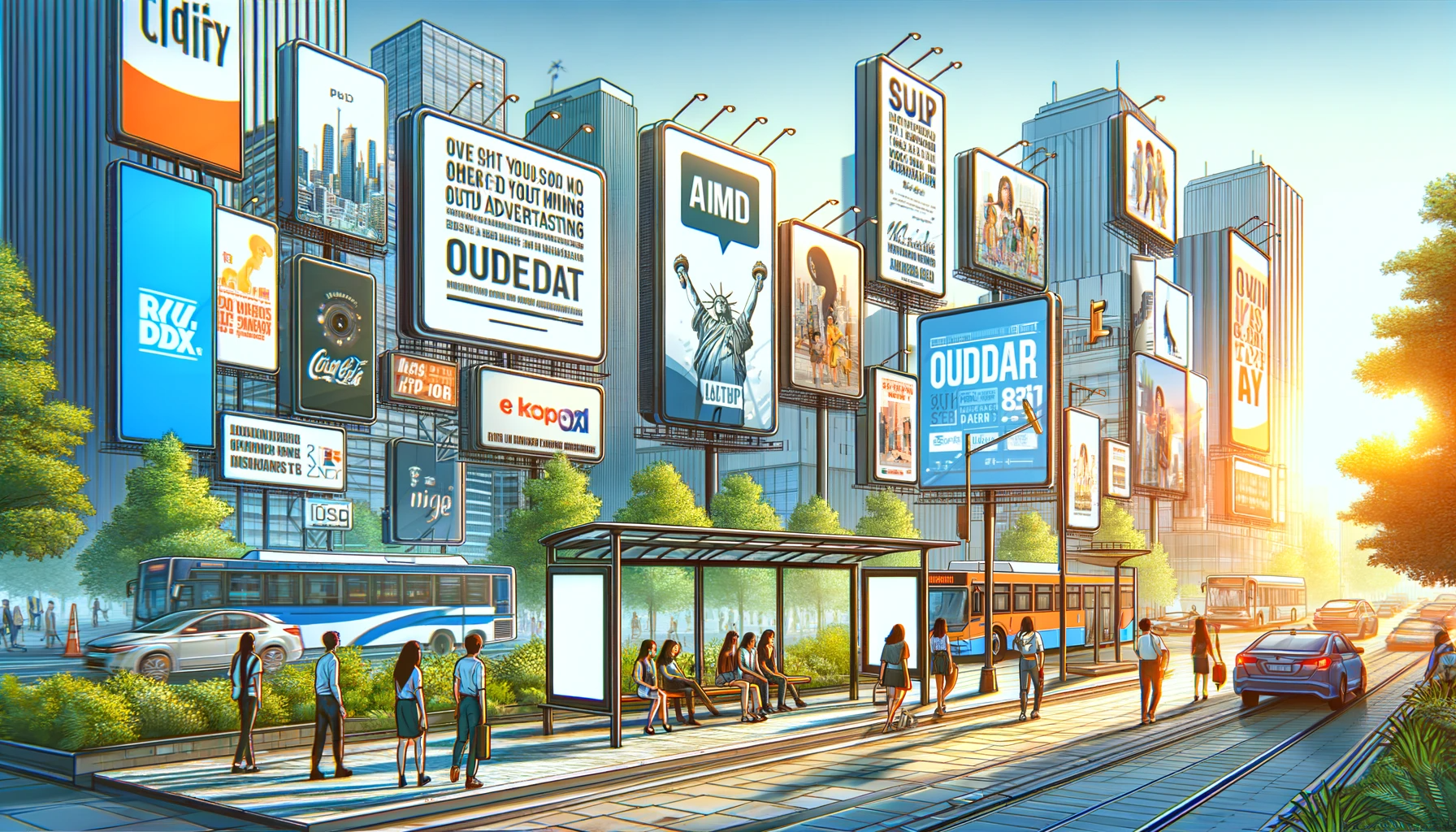
7. Direct Mail Advertising
Direct mail involves sending promotional materials directly to homes or offices. It’s highly targeted and personal, making it effective for local businesses and niche markets. Direct mail can range from postcards to elaborate product catalogs.
8. Influencer Advertising
Influencer advertising leverages the popularity and credibility of social media influencers. Brands collaborate with these influencers to promote products to their followers, often resulting in higher engagement due to the trust the audience has in the influencer.
9. Guerilla Advertising
Guerilla advertising is a creative and unconventional form of advertising that often involves public stunts or installations. It’s designed to create buzz and word-of-mouth promotion, making it effective for brands looking to make a bold statement.
10. Native Advertising
Native advertising involves ads that blend in with the content of the platform on which they appear. These ads are less intrusive and can provide value to the audience in the form of content that’s relevant and interesting.
How Does Mass Communication Help in Advertising?
Mass communication plays a pivotal role in the world of advertising. It serves as the backbone for disseminating information to a large audience, essential for any advertising strategy. Here’s how mass communication aids in advertising:
- Wide Reach: Mass communication channels like television, radio, and digital platforms can reach a vast audience simultaneously. This wide coverage is invaluable for brands seeking national or global recognition.
- Diverse Audience Engagement: Through various mass media channels, advertising can appeal to diverse demographic groups, including different ages, interests, and geographic locations.
- Cost-Effectiveness at Scale: While individual advertising efforts can be expensive, mass communication allows for cost distribution over a larger audience, making the per-unit cost of reaching each customer more economical.
- Brand Building: Consistent presence across mass media helps in building a strong brand identity. This repetitive exposure is crucial for brand recall and recognition.
- Feedback and Measurement: Modern mass communication tools offer analytics and feedback mechanisms. For example, digital advertising provides immediate data on viewer engagement, helping advertisers to refine their strategies.
- Multimedia Integration: Mass communication offers the ability to integrate various forms of media – text, images, video, and audio, creating a richer and more engaging advertising experience.
- Influencing Public Opinion: Advertising through mass communication can shape and influence public opinion and trends, a powerful tool for creating market demand.
- Speed and Timeliness: Mass communication enables quick dissemination of information, allowing advertisers to respond swiftly to market changes or to launch time-sensitive campaigns.
Why is Mass Communication Important in Advertising?
The importance of mass communication in advertising is multifaceted, directly impacting the success and outreach of advertising campaigns.
- Building a Wider Customer Base: Mass communication allows advertisers to reach potential customers beyond their immediate geography, essential for expanding the customer base.
- Creating a Competitive Edge: In a crowded market, visibility through mass communication channels can give brands a competitive advantage, making them more recognizable and preferred over others.
- Adaptability to Trends: Mass communication channels are adept at adapting to and reflecting current trends, making advertising relevant and timely.
- Cultural Influence: Advertising through mass media can resonate with cultural trends, values, and norms, allowing brands to establish a deeper connection with their audience.
- Educating Consumers: Mass communication provides a platform for educating consumers about products and services, their uses, and benefits, which is crucial in decision-making processes.
- Crisis Management: In times of crisis, mass communication becomes an essential tool for brands to manage their image and communicate with their customers effectively.
- Social Impact: Advertisements through mass media can also drive social change, aligning brand values with societal issues, which resonates well with the modern, socially-conscious consumer.
Tips for Mass Communication in Advertising
Mass communication in advertising plays a crucial role in reaching a broad audience and effectively conveying marketing messages. To optimize your strategies in this dynamic field, it’s essential to understand the best practices and integrate them into your advertising efforts. Here are some valuable tips to consider:
Understand Your Audience
Knowing your audience is the cornerstone of effective mass communication. Conduct thorough market research to understand their preferences, needs, and behaviors. Tailor your messages to resonate with your target demographic, considering factors like age, gender, location, and interests.
Choose the Right Channels
Select the appropriate media channels for your message. Consider the strengths of different mediums like print, television, radio, digital platforms, and social media. Align your choice with where your target audience spends most of their time.
Craft Compelling Content
Content is king in advertising. Create engaging, informative, and persuasive content that captures attention and encourages action. Use storytelling to connect emotionally with your audience and make your brand more relatable.
Leverage Data and Analytics
Utilize data analytics to gain insights into your audience’s behavior and preferences. Monitor campaign performance across different channels and make data-driven decisions to optimize your strategies.
Foster Brand Consistency
Maintain a consistent brand voice and image across all channels. This consistency helps in building brand recognition and trust among your audience.
Embrace Creativity
Stand out in the crowded advertising space by being creative. Innovative and unique advertising approaches can make a lasting impression and foster higher engagement.
Utilize Interactive and Engaging Formats
Incorporate interactive elements in your advertising like polls, quizzes, or engaging visuals. These formats can increase user engagement and make your content more memorable.
Focus on Multi-Channel Strategies
Integrate multiple channels in your advertising strategy to create a cohesive and comprehensive approach. This ensures your message reaches your audience across various touchpoints.
Monitor and Adapt to Trends
Stay updated with the latest trends in advertising and mass communication. Adapt your strategies to align with emerging technologies, platforms, and consumer preferences.
Encourage Feedback and Engagement
Create opportunities for your audience to interact with your brand. Encourage feedback, engage in social media conversations, and build a community around your brand.
Evaluate and Iterate
Regularly evaluate the effectiveness of your advertising campaigns. Use feedback and performance data to iterate and improve your strategies continually.



